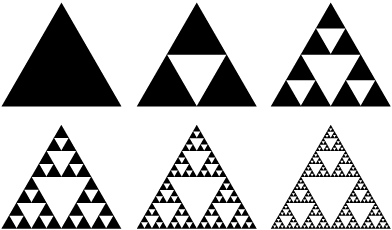Lesson 10
1. Lesson 10
1.6. Explore 2
Module 2: Logic and Geometry
Self-Check 2
Complete “Further Your Understanding” questions 2, 3, and 4 on page 106 of your textbook. Answer
In previous lessons you have used deductive reasoning to prove elements of designs, such as pairs of parallel lines. Deductive reasoning can also be used to prove that two triangles are congruent. The steps involved in proving that two triangles are congruent are similar to the steps involved in proving two lines are parallel.
To prove that two triangles are congruent, you first need to analyze the given information. Then, through a series of statements and reasons, you can develop your proof. The minimum set of angle and side measurements required to ensure that triangles are congruent can be used to help build your proof. Remember that in order for the proof to be valid and understood by others, the reasoning must be presented in a logical and clear way.
Consider the following situation.
Did You Know?
Fractals are shapes that are made up of smaller copies of the original shape. The copies are similar; they have the same shape but different sizes. For more information on fractals, including fractal puzzle makers, search the term “fractal” on your favourite Internet search engine.
Lisbeth has been trying to recreate the Sierpinski Triangle pattern shown here. This pattern is an example of a fractal. To build Sierpinski’s Triangle, start with an equilateral triangle with a side length of one unit (see Figure 1). The triangle is then divided into four triangles by finding the midpoint of each side and then connecting the midpoints. The middle triangle is then cut out (see Figure 2). This process is repeated to produce the remaining figures.


In Figure 2, the pattern is made up of four small triangles and one large triangle. Lisbeth knows that in order for the pattern to continue on successfully, the smaller triangles have to be congruent. She decides to use her knowledge of triangles and angle properties to prove that the two bottom black triangles are congruent.
Watch the animation Proving Congruence to see how Lisbeth builds her proof. As you work through Lisbeth’s proof, think about the importance of updating diagrams as you progress through a proof.
The pairs of sides and angles that are chosen to prove congruence depends on the information given and other relationships that you can deduce.
Share 1
With a partner, explain another way to prove that the triangles in the Sierpinski Triangle pattern are congruent.
Deductive reasoning can also be used to prove the classification of triangles. For instance, reasoning can be used to prove that a triangle is an isosceles or equilateral triangle. Deductive reasoning can also be used to prove that parts of triangles are equal.
